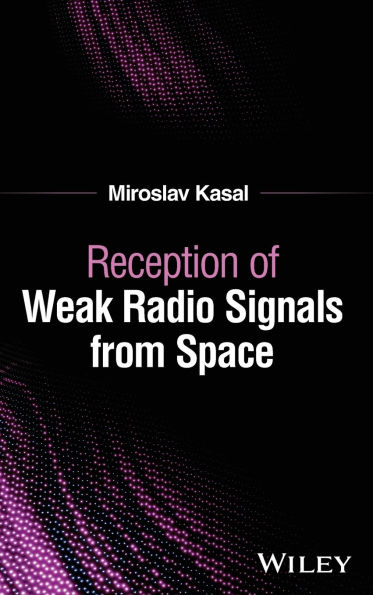Reception of Weak Radio Signals from Space explores all aspects of detecting and making sense of extremely weak radio frequency (RF) signals, especially those emanating from space. The subject matter ranges from general physics fundamentals to highly specialized issues of design and optimization of microwave antennas, low-noise amplifiers, receivers, transmitters, and frequency synthesizers with very specific characteristics.
Special consideration is paid to the advanced technique of radio linking by reflection of signals from the lunar surface, where, using modern software for digital communication, it is possible to realize links with signals ten or more decibels weaker compared to analogue modes. Each chapter briefly summarizes the theory and applicable relationships and complements the discussed topic with descriptions of specific solutions for individual parts of the communication system. Detailed annotated examples of calculations and implementations are included to aid in reader understanding.
The book also discusses specific properties of antennas including brightness and noise temperature, directivity, and polarization, and covers the technical characteristics of interplanetary probes such as Voyager, Cassini, Mars Odyssey, and others.
Additional topics in Reception of Weak Radio Signals from Space include:
- Microwave receivers, covering noise matching, cooled amplifiers, noise figure measurement, and low-noise amplifiers for 1.3 and 10 GHz bands
- Wave propagation in free space and the influence of the atmosphere via precipitation clouds and the ionosphere, including techniques for measuring the figure of merit G/T of the receiving system
- Local oscillators, including direct digital and phase-locked loop synthesizers
- High-frequency rectangular and circular waveguides and coaxial and planar transmission lines
- Parabolic antennas, describing mirror geometry and its radiation as well as scalar radiator feeds
Reception of Weak Radio Signals from Space is an excellent resource on up-to-date information for engineers and scientists working in space communications as well as graduate and senior undergraduate students and radio amateurs.
Reception of Weak Radio Signals from Space explores all aspects of detecting and making sense of extremely weak radio frequency (RF) signals, especially those emanating from space. The subject matter ranges from general physics fundamentals to highly specialized issues of design and optimization of microwave antennas, low-noise amplifiers, receivers, transmitters, and frequency synthesizers with very specific characteristics.
Special consideration is paid to the advanced technique of radio linking by reflection of signals from the lunar surface, where, using modern software for digital communication, it is possible to realize links with signals ten or more decibels weaker compared to analogue modes. Each chapter briefly summarizes the theory and applicable relationships and complements the discussed topic with descriptions of specific solutions for individual parts of the communication system. Detailed annotated examples of calculations and implementations are included to aid in reader understanding.
The book also discusses specific properties of antennas including brightness and noise temperature, directivity, and polarization, and covers the technical characteristics of interplanetary probes such as Voyager, Cassini, Mars Odyssey, and others.
Additional topics in Reception of Weak Radio Signals from Space include:
- Microwave receivers, covering noise matching, cooled amplifiers, noise figure measurement, and low-noise amplifiers for 1.3 and 10 GHz bands
- Wave propagation in free space and the influence of the atmosphere via precipitation clouds and the ionosphere, including techniques for measuring the figure of merit G/T of the receiving system
- Local oscillators, including direct digital and phase-locked loop synthesizers
- High-frequency rectangular and circular waveguides and coaxial and planar transmission lines
- Parabolic antennas, describing mirror geometry and its radiation as well as scalar radiator feeds
Reception of Weak Radio Signals from Space is an excellent resource on up-to-date information for engineers and scientists working in space communications as well as graduate and senior undergraduate students and radio amateurs.

Reception of Weak Radio Signals from Space
240
Reception of Weak Radio Signals from Space
240
